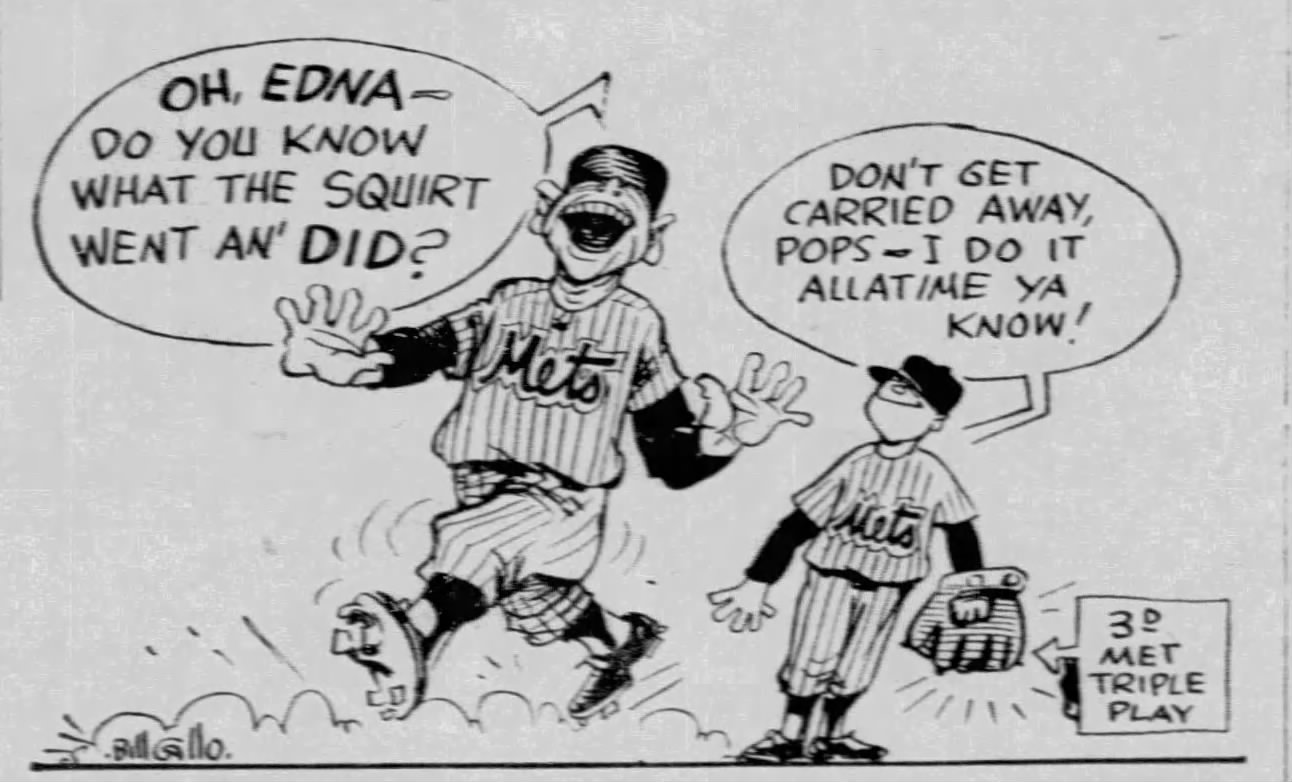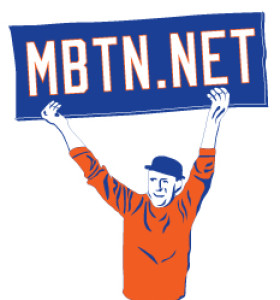Twenty-four was a meaningful number in New York long before the Mets came along.
![]() Once they did, there were six Mets who played in 24 before Willie Mays, and three since. We’ve addressed the first two of the latter group already in Kelvin Torve and Rickey Henderson. Today is for the most Mays-ish of the former group, Johnny Lewis.
Once they did, there were six Mets who played in 24 before Willie Mays, and three since. We’ve addressed the first two of the latter group already in Kelvin Torve and Rickey Henderson. Today is for the most Mays-ish of the former group, Johnny Lewis.
Like Mays, Johnny Joe Lewis was born in Alabama. Also like Mays, he was considered something of a five-tool player, hitting for power and average, throwing well, and running well. And while keeping things in perspective for the atrocious Met clubs he’d played for, Lewis was the Mets’ own Willie Mays in 1965, leading the club with 2.4 Win Shares according to Baseball Reference, and was the top scorer in a separate ranking of the ’65 club according to the Crane Pool Forum.
Lewis came to the Mets along with lefty Gordie Richardson in a December 1964 trade with St. Louis for pitcher Tracey Stallard and infielder Elio Chacon.
In his first season as a regular player in his career, the 25-year-old Lewis hit .245 with 15 home runs, 45 RBI and led the Mets in runs scored, walks, and on-base percentage. His 106 OPS+ was the only “plus” on the club that year but for rookie Ron Swoboda (103). Lewis was a lefthanded batter whom Casey Stengel often batted first, third or fourth in the order. Lewis split time in center field and in right, where he showed off a power arm.
On April 15 at Shea against Houston, Lewis caught a Jimmy Wynn fly ball with runners on first and third, and gunned down Walt Bond at the plate. Catcher Chris Cannizzaro then fired to second where Roy McMillan slapped a tag on the advancing Bob Aspromonte to complete a triple play. The game was won 5-4 on a walkoff 10th inning home run by Bobby Klaus.

Bill Gallo, New York Daily News
Bill Gallo’s Daily News cartoon said it best. Though Lewis and the Mets were on their way to their best start in their short history, they’d be buried by 47 games by the end of the year, and Lewis’ own fortunes would turn as well. As he slumped in August, the Mets had Lewis outfitted with eyeglasses; and by 1966, they were were tinkering with his batting stance.
According to John Stahl’s SABR bio, Lewis felt that manager Wes Westrum, who replaced Stengel late in 1965, may have had it in for him.
“I had more homers and runs batted in than the Mets’ four other outfielders,” he said. “I only played when someone was hurt but I was always in there against the top pitchers. If (manager Wes Westrum) had something against me, or if I had done something wrong, I’d understand. I must say I didn’t get a fair shake by the Mets. But I’ll give them 100 percent.”
![]() Lewis hit just .193 in 1966 when he was farmed out midseason. By the time he’d resurfaced in 1967, the Mets had given away his uniform number 24 to newly arrived third baseman Ed Charles. Charles however gave it back to Lewis when he was called up in May. (Charles took the No. 5 belonging previously to Sandy Alomar (Sr.) who was sent down when Lewis was recalled). When Lewis was sent back to Class AAA in June of ’67, his big-league playing career was over and the Mets were still looking for their Mays.
Lewis hit just .193 in 1966 when he was farmed out midseason. By the time he’d resurfaced in 1967, the Mets had given away his uniform number 24 to newly arrived third baseman Ed Charles. Charles however gave it back to Lewis when he was called up in May. (Charles took the No. 5 belonging previously to Sandy Alomar (Sr.) who was sent down when Lewis was recalled). When Lewis was sent back to Class AAA in June of ’67, his big-league playing career was over and the Mets were still looking for their Mays.
Lewis was not done with baseball, however, nor with ex-Mets. Cardinals GM Bing Devine, who crossed paths with Lewis in the Mets’ organization, named Lewis the Cardinals’ first-ever Black field coach in 1973. Lewis subsequently became Whitey Herzog‘s Cardinals’ hitting coach from 1985 through 1989. Lewis wore 48 in that treacherous stint, however, as 24 belonged to Herzog.








